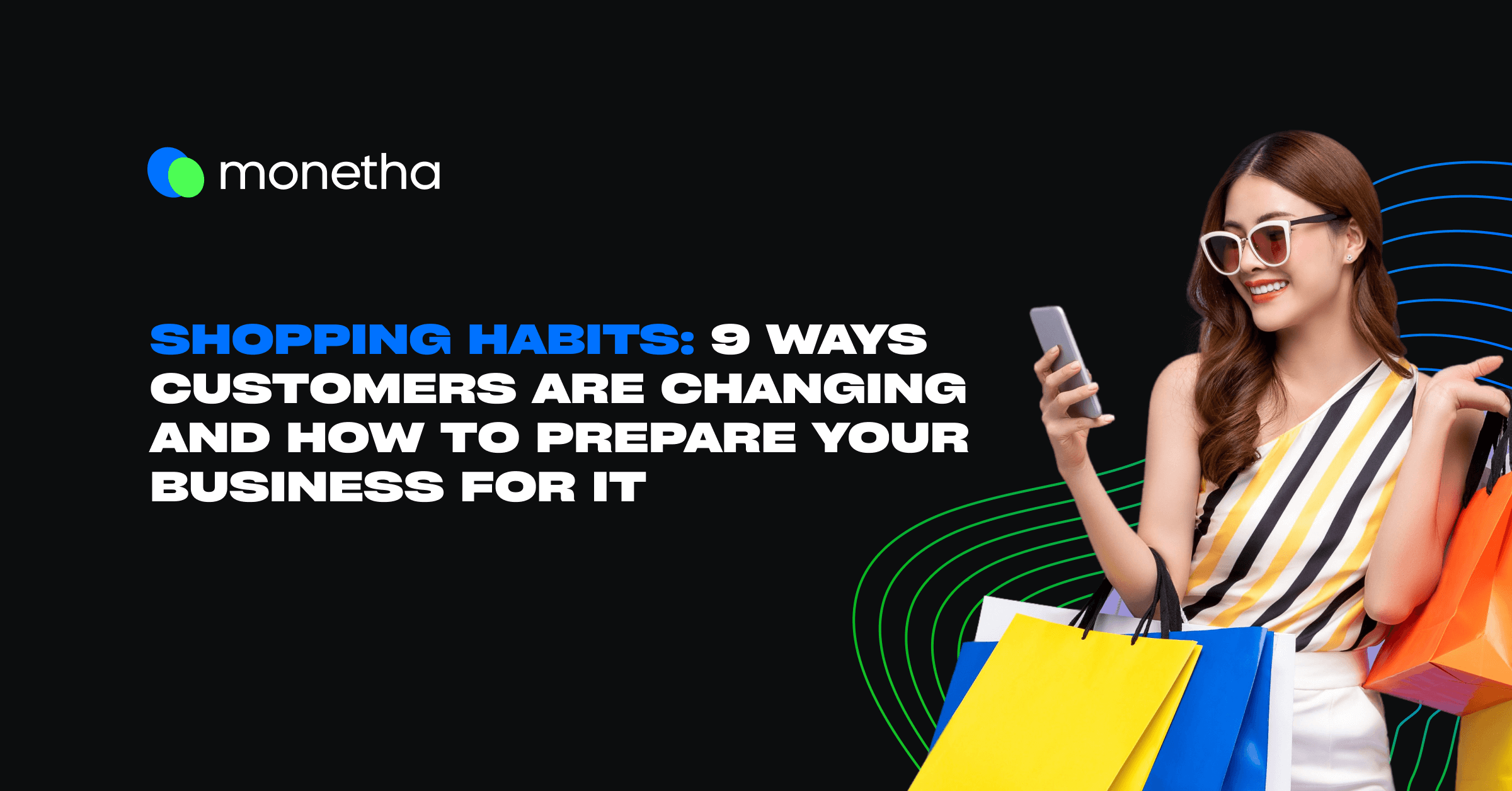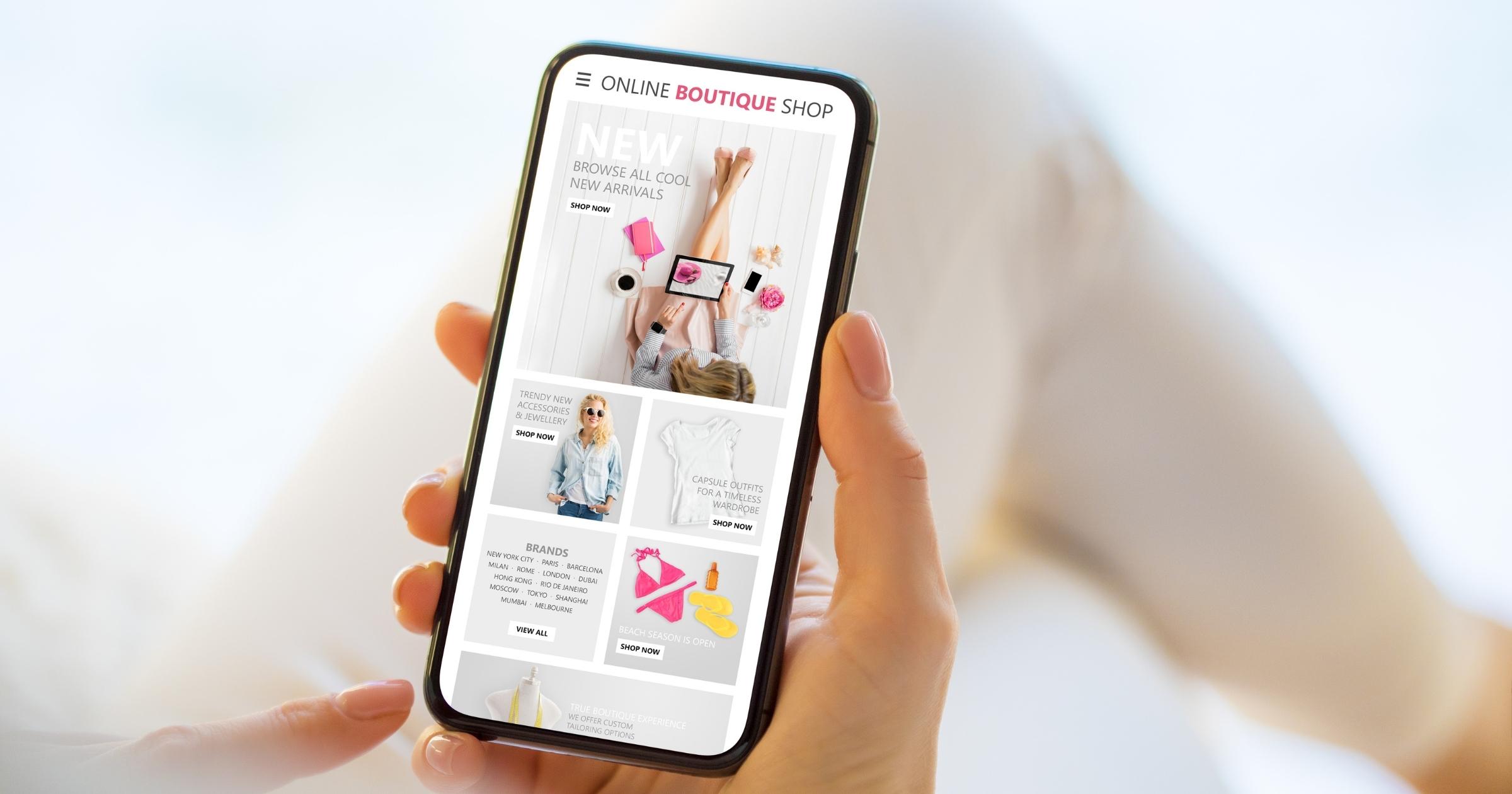All of our shopping habits revolve around convenience. Consumer spending has shifted dramatically due to considerable changes in living, working, and learning settings. Everything is done via online shopping, from buying groceries to toilet paper to apparel and health care products.
The average person buys year-round but by spending less each time. People are getting less loyal to individual stores, with 65% admitting that if their favorite brands are sold out or low in stock, they will buy the next best alternative.
As a result, retailers need to rethink their tactics to adapt to changing consumer behavior, expectations, and shopping habits.
If you adapt quickly to new market trends while staying relevant to your audience, your company will likely be one of the first to take advantage of the online shoppers’ demands and needs.
People are ready to spend—let us learn how to target shoppers to your sites instead of your competitors.
1. Online sales are increasing
Online shopping has become more popular than ever before. People can purchase quality goods and get value for money (more discounts on online shopping platforms than in-store shopping channels) and from the convenience of their homes. And the attention spans of online shoppers are getting shorter. So, suppose you possess an ecommerce business and want consumers to buy from you, you must be able to instantly capture their attention—and make the purchasing experience enjoyable and straightforward.
Here’s how you can do it:
- Ensure your website is compatible with both desktop and mobile app versions and has adequate speed and fast loading.
- Remember that a good photo is worth a thousand words (and maybe a thousand dollars).
- When it comes to content, keep in mind that less is often more.
- Include feedback from consumers.
- Catalog and categorize your merchandise and make the user interface easily navigable.
- Tell shoppers if an item is in stock or when it will be back-ordered on the product page.
- Make it simple for customers to get in touch with you or subscribe to your email list.
- Allow consumers to save their carts and make checking out straightforward.
- As long as you can afford it, provide free shipping.
2. But physical retail is still important
While online shopping is becoming more popular, in-store shopping still appeals to customers. According to research, most customers (88%) still do their grocery shopping in stores.
As a result, merchants that have physical storefronts shall continue to invest in there for the following reasons:
- Consumers who pick up their orders in a store often purchase additional things.
- A product that a customer has seen in person is more likely to be purchased. This can also lessen the likelihood of a product being returned due to size, color, or other issues.
- Personalized customer experience promotes sales.
- A physical store gives you a chance to create a memorable brand experience.
- By observing people buy and engage with the space and items, retailers may gain free market research about their preferences and habits (you can analyze customer behavior in online shops too).
- Online retailers receive more traffic from physical stores.
3. Users want more flexibility and control
According to research, online consumers also demand complete freedom and control over when and how their packages are delivered. It also revealed that consumers have strong opinions on delivery costs and timelines. They also demand more efficient services and the option to follow their online orders and packages throughout the delivery process.
To keep up and compete in a world where the competition is fierce, and the stakes are high, online retailers must genuinely comprehend the ever-changing face of the buyer and must constantly develop their strategy.
4. Mobile-first is here to stay
The way we shop on the internet is evolving. Smartphone sales have risen considerably, indicating that customers are adjusting to the connectedness that their cell phones provide.
Furthermore, search engines favor mobile websites, with Google’s mobile-first index demonstrating their popularity. Google considers the speed of sites to be one of the most crucial factors for ranking. Image dimensions, file sizes, and site code scripts can significantly slow down websites; therefore, a mobile audit is worthwhile.
If it isn’t already, your website should be mobile-friendly to make it as simple as possible for clients to purchase things with a smartphone tap.
5. Voice search is important
Smart speakers and voice searches on smartphones have quickly become a must-have accessory. According to reports, 135.6 million individuals in the United States now utilize voice search tools.
Voice searches are inclusive and allow those with visual impairment to better access your platforms and make purchases, thus increasing your sales and popularity among online shoppers.
Optimizing your Google My Business listing for location and hours of operation responds to frequently asked questions like “where is the nearest spa?” and helps people find you.
6. Customer loyalty is evolving
According to statistics, 263 million Americans (or 80% of the population) enjoy shopping online. 55% of internet users prefer to shop online, and 80% shop at least once a month. This goes on to illustrate how vital convenience and comfort are to consumers. If loyalty marketing isn’t already part of your strategy, here are some pointers to help you get started:
- Learn everything you can about your consumers in their environment: It has become more vital than ever to have the data and resources you need to listen, engage, and provide a valuable experience to your customers.
- Consistency and authenticity inspire client trust: Authenticity breeds confidence. People are drawn to brands that have a unique story to tell. Every interaction with your customer should be consistent in tone and significance.
- Don’t be scared to become emotional: It’s crucial to remember that emotions significantly impact purchasing decisions. If marketers can master the art of telling emotional tales, they can transform ordinary customers into loyal customers.
- Make everything seem effortless: It’s all in the details. It’s not just about pleasing your consumers; it’s also about making it easier for them to solve a problem.
7. AI, AR, and VR will impact how people shop
Mintel, a market research firm, predicted that virtual and augmented reality technologies would permeate our homes, affecting how we shop, the brands we prefer, etc.
Consider the impact that technology can have on purchasing habits if you consider the possibility of obtaining your things via drone rather than the good old parcel delivery driver. AI-powered chatbots promote a better consumer experience and help provide intelligent suggestions to end-users based on their browsing experience and past purchases.
8. Users want instant customer support
Consumers don’t require go-betweens to help them with simple functions in the self-service internet age. People have come to anticipate self-service, and if you allow them to get to the point where they need to contact you, you’ve stifled usage and adoption. Here are some suggestions for how to improve your customer service strategy:
- Ascertain that your squad has the necessary equipment: When it comes to providing exceptional customer service, dedicated CRM software is typically the best option.
- Provide self-service support: Most consumers want to be able to fix most problems on their own.
- Ensure you have a knowledge base with solutions to frequently asked questions and how-to articles that walk clients through the procedures necessary to address common issues.
- Optimize your content for search engines to simplify end-users to locate solutions to their questions.
- Patience, alertness, the ability to communicate properly, a willingness to learn, and empathy are all essential qualities to look for when hiring customer support personnel.
- Responding to inquiries in time is important.
- Make it simple for consumers to reach you by placing your contact information in strategic locations throughout your website.
9. Customers are using social media to purchase
There are now tons of alternatives for purchasing items online via social media. Small businesses especially use social media for marketing their products. Affiliate and influencer marketing help drive sales among their followers.
When consumers were questioned, “Have you ever bought something directly from a social media platform?” Approximately 55 percent of consumers affirmed that they had bought products on at least one of these platforms:
- Facebook Shops: Facebook Shops allows admins of business pages to create a “Shop” with a list of products or product collections. Social media helps create brand loyalty and even established brands and new brands see huge revenue being generated from their social media pages.
- Instagram: To take advantage of Instagram shops, simply connect your online shopping site and Instagram Business pages. You may also use the Instagram Shoppable Posts functionality to link your Instagram feed posts and photographs to the product’s Instagram Checkout page. You can use Instagram tools like Instagram Stories, Instagram Live, and Instagram Reels to promote your brand’s offerings.
- WhatsApp: As WhatsApp keeps expanding its business features, it’s worth keeping an eye on if you’re looking to build a chat-based community while also generating social revenue.
- Pinterest: Pinterest is used by many audiences to develop inspiration boards with products or items they might want to buy. Pinterest data also suggests that visitors enjoy searching for and learning about things on the site.
Conclusion
Online buying habits are constantly changing and evolving. Retailers are striving to keep up and anticipate buyers’ behavior. Consumers are spoilt for choice, switching from one merchant to the next at the touch of a button.
To keep up and prosper in a world where the competition is fierce, and the stakes are high, everyone has to be constantly on their toes to survive, from big box retailers like Walmart and Target to new-age startups.
Companies can break through the noise and foster loyalty, engagement, and trust by providing extraordinary client experiences.
FAQ
What are 4 types of customer buying behavior?
There are essentially four types of buying behavior: habitual buying behavior, variety-seeking behavior, dissonance-reducing buying behavior, and complex buying behavior.
What are some shopping habits?
Your target audience’s spending habits and preferences are referred to as shopping habits.
Understanding your consumers’ shopping habits allows you to tailor your marketing better to meet their demands.
Here are some examples of shopping habits: Impulsive, spendthrift, average spender, and frugal spender.
How do I stop a shopping habit?
Here are 4 ways you can change customer buying behavior:
- Identify customer expectation
- Create conversations and explore their values.
- Mobilize your leaders and help them understand and address the changing business environment.
- Identify your business goals and be on the forefront rather than constantly watching from behind and trying to catch up.









